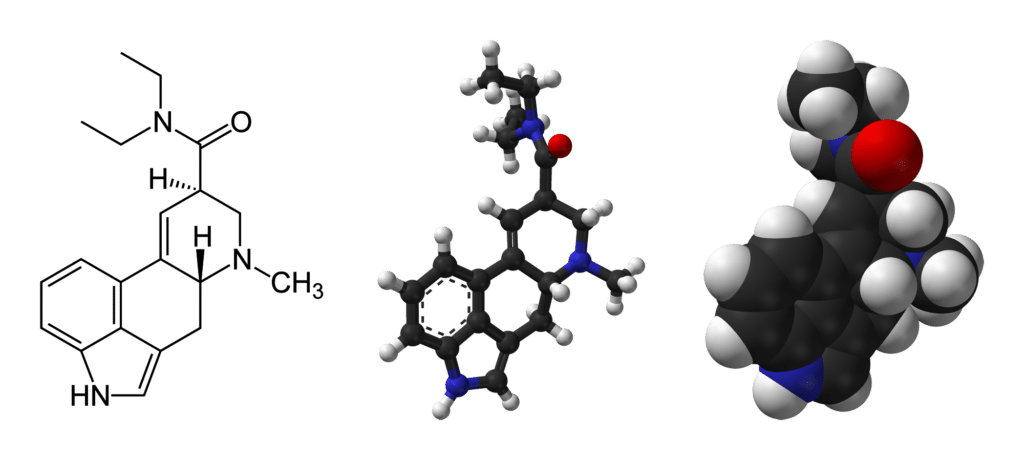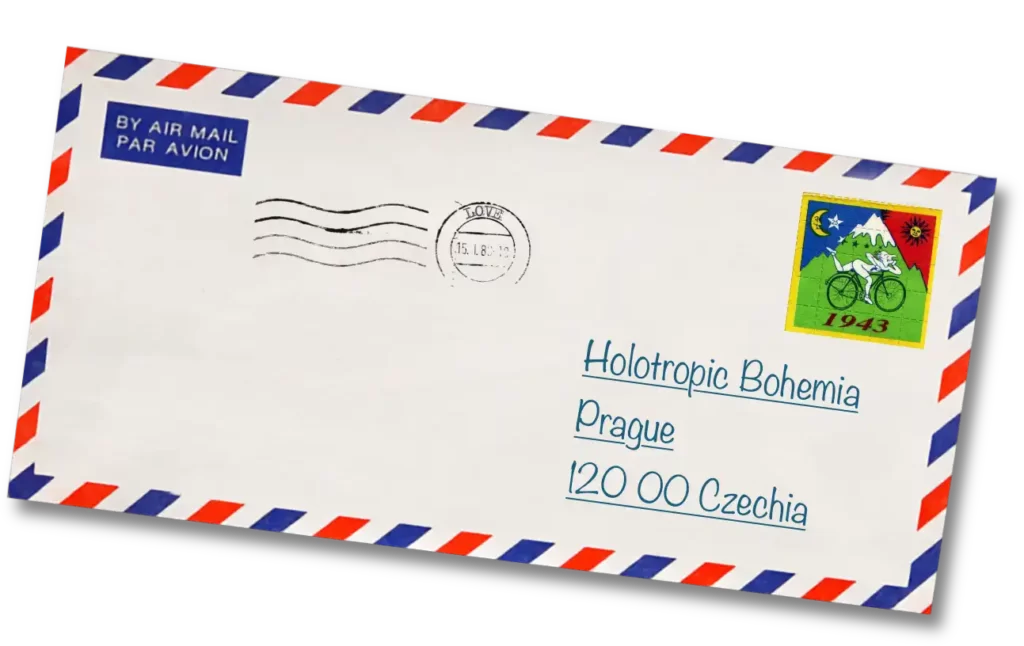Theoretical Framework
CONTENTS
Contents:
- Transpersonal Psychology and Grof’s Extended Cartography of the Psyche
- Systems of Condensed Experience – COEX Systems
- The Perinatal Domain
– Psychospiritual Death and Rebirth
– Basic Perinatal Matrices (BPM)
4. Beyond the Perinatal and on The “Inner Radar”
Considering the theoretical framework of holotropic therapy, the best strategy by far will be to go out, hit the local public library, dig up a few of Stanislav Grof’s books and see for ourselves what Dr. Grof has been trying to tell us over the course of his 60-year-long professional career. Nowhere else will we find the theory of Holotropic Breathwork explained so clearly and comprehensively. As already mentioned elsewhere, Grof has been drawing upon multiple scientific disciplines, and philosophical thought systems stemming from manifold sociocultural domains. He also drew from the work of numerous individual thinkers, theorists and spiritual leaders. Many of these brilliant minds were his friends and colleagues, others influenced him through their published work, most notably perhaps Sigmund Freud and Carl Gustav Jung. Having said that, we must add that the primal source of Grof’s work is based on medical science, namely Psychiatry, which is his original field of expertise.
So, let’s delve into it! The following is a brief summary of a few of the most prominent concepts of the theoretical framework that informs holotropic practice. In this way, we gain an initial insight into the ideas that underpin our understanding of the many unusual experiences to be encountered during our practice, as well as the impact these can have on our everyday lives.
May this serve as an inspiration to you to keep exploring and garnering more understanding, be it on this website, or from other sources. There is no shortage of written, as well as audio-visual content available, elaborating on this extraordinarily intriguing topic.[1]
Transpersonal Psychology
Let’s begin with a brief history of the developments in modern Psychology. In the mid-20th century, a new thought movement emerged in the field of Psychology, which became known as Humanistic Psychology. Sometimes this movement is regarded as the third force of Psychology, as it sought to overcome the limitations of the first and second forces, namely Behaviorism and Psychoanalysis, respectively. While Freud and his Psychoanalysis eventually ended up revolving somewhat disproportionately around the darker realities of the human psyche, the new pivotal element introduced by the humanistic approach was a recognition of the individual’s inherent human drive toward self-actualization – the process of realizing and fulfilling one’s own creative and spiritual potential. It is this same idea of self-actualization that was somewhat later adopted and expanded upon by the emerging branch of Transpersonal Psychology, which then became known as the fourth force. While Carl Rogers and Abraham Maslow are considered the founders of Humanistic Psychology[2], it is again Abraham Maslow, together with Anthony Sutich and Stanislav Grof, who, at the dawn of the 1970s, forged the fundamental tenets of Transpersonal Psychology.
Both Humanistic and Transpersonal Psychologists were closely interconnected with the Human Potential Movement. This movement took as its premise the belief that through the development of “human potential”, people can experience an exceptional quality of life, filled with happiness, creativity, and fulfillment.[3] Another prominent characteristic of the transpersonal movement was its ideological link to the teachings of the Eastern spiritual traditions and their systems of mind-cultivating practices, oriented towards the realization of advanced stages of mind and personality cultivation, and their understanding of such a realization as being equivalent to the fulfillment of the most fundamental purpose of a human being’s life. Holotropic Breathwork itself, being one of the signature therapeutic applications of Transpersonal Psychology (besides, perhaps most notably, Psychedelic Therapy) can thus be seen as a Western counterpart, or, strictly speaking, a complement, to the ancient Eastern spiritual practices. Lastly, Transpersonal Psychologists and practitioners have also established a constructive link to living shamanic traditions, particularly those using “plant medicines”.[4]
Right, enough of history! Now we are ready to take a closer look at the basic concepts of Stanislav Grof’s theoretical work…
Grof’s Extended Cartography of the Human Psyche
Working right from the beginning of his career in the field of experimental psychedelic research, Grof soon discovered that the established psychological models of the human psyche cannot offer a functional, or at all sensible framework for the observations he made with his patients on a day-to-day basis. People undergoing Psychedelic Therapy were reporting experiences for which traditional Psychology and Psychiatry had no explanation whatsoever, except for labeling them as delusional, irrelevant, and pertaining to a state of mental illness. Grof, being a careful observer, and having undergone psychedelic experiences himself, was not ready to settle for these conventional rationalizations. Having spent the first 14 years of his career conducting several thousands of high-dose psychedelic sessions with psychiatric patients — observing, describing and evaluating, as well as interviewing the subjects and recording their reports — Grof was now ready to formulate what later became known as his extended cartography of the human psyche. It is this cartography that serves us in our holotropic practice as the primary reference frame for our personal experiences. It helps us to orient ourselves on the path of self-exploration and is an essential tool for facilitating an effective integration of the newly accessed material after an experiential session.
Grof’s map introduces three general territories: biographical, perinatal and transpersonal.
The first domain – biographical – comprises all the experiential material, ranging from the moment of our biological birth, all the way to the present time. This is pretty much equivalent to what was already dealt with by Freud’s Psychoanalysis, and can also be called the psychodynamic domain. It includes experiences such as early childhood memories, memories of traumatic events e.g. accidents or abusive relationships, unresolved emotional conflicts, mutually incompatible internal drives and suppressed personality fragments, fantasies about sexual domination or submission, etc. During a Holotropic Breathwork session, people may re-experience situations from their past, which they would normally not expect to be capable of recalling, often with new levels of clarity, or insight into previously unrecognized aspects of those situations. This experiential process bears significant potential for accessing new opportunities for healing and is especially powerful when combined with verbal Psychotherapy.
The next domain – perinatal – represents perhaps the most unique component of Grof’s description of the psyche. Nowhere else, with regard to maps of the human psyche, will we find such emphasis on this period of our development. In Grof’s model, the perinatal experiential domain spans our history from the moment of conception to the event of biological birth. The idea that one could experientially access contents from this period of very early development, i.e. memories of one’s birth, or even intrauterine life, was so revolutionary that even today, several decades later, conventional Psychology still refuses to accept it. Yet, as anyone seriously involved in the study and utilization of holotropic states of consciousness would attest, these experiences are exactly what we observe time and again in people undergoing holotropic therapy. When we enter the perinatal domain, we discover that our usual ways of making sense of categories like time and space, me and not me, or body and mind, start becoming increasingly challenged. It is a domain of huge emotional and physical energies, dominated for a large part by a peculiar mixture of sexuality and enormous violent and aggressive impulses. In addition, it is a place where we may obtain a direct taste of Heaven and Hell. Roots of some of the most widespread emotional disorders may be found here, including depression, phobias and various sexual deviations. At the same time, it is in the perinatal domain that we may gain crucial, direct insights into the nature of the cyclical, universal, and all-pervading principle of (psychospiritual) death and rebirth. In that case, we may subsequently find ourselves suddenly being able intuitively to derive completely new meaning from a great deal of the world’s religious and philosophical doctrines.
The third domain is the transpersonal. This is the broadest and largest of all the three territories discussed. In fact, it may be considered limitless.[5] The transpersonal experience is typically marked by the overcoming of the usual confines of time, our physical body with its definite location in space, transcending our personality, or even the self as such.[6] We may also be confronted with the existence of other than linear causal relationships, the revelation of which may or may not take us by surprise, as well as other, previously perhaps unimaginable phenomena, e.g. the possibility of a co-manifestation of mutually exclusive occurrences within a single contextual framework (be it spatiotemporal, or otherwise). Our sense of experiential identification and subjective relating may occur anywhere in the cosmos, inner or outer, known or unknown, in the present, past or the future, or entirely beyond all these categories. Discovering and accepting the existence of the transpersonal domain ultimately means realizing that we are capable of accessing any process or phenomenon in the universe as a subjective experience, by virtue of having a mind and body. It also means that any and all boundaries in the universe – physical and mental – are ultimately illusory and, under certain conditions, subject to dissolution. This kind of realization can be tremendously liberating and enlightening, as well as, at times, deeply terrifying and disconcerting. It cannot be overstated how critically important it is for a person who embarks on the journey of exploration of the transpersonal domain (and the perinatal, for that matter), to be equipped with a thorough knowledge of at least one comprehensive map of the territory explored, but preferably of several. Grof’s theoretical work will make for a good starting point, possibly complemented with some knowledge of Ken Wilber’s writings, plus maybe, as a bonus, a limited insight into the theory of quantum mechanics and the general systems theory.[7] Of course, some acquaintance with the Eastern spiritual thought systems, especially e.g. Buddhism, Yoga, and Taoism, will be of significant benefit here as well.
Let’s zoom in one step closer now on our map, to get a slightly more detailed understanding of the territory to which our holotropic practice might take us. Within each of the broad categories of biographical, perinatal and transpersonal, further sub-structures can be identified. Once more, Grof offers some very interesting and useful conceptualizations in this respect. It is again based on his original experimental research into Psychedelics-Assisted Psychotherapy, which he conducted during the ‘60s and ‘70s in Czechoslovakia and the USA.[8]
On the basis of his observations from the extensive number of experimental psychedelic sessions[9], Grof developed several additional concepts that proved particularly useful in the understanding of the immense variety of internal experiences that were manifested in his patients during the sessions.



